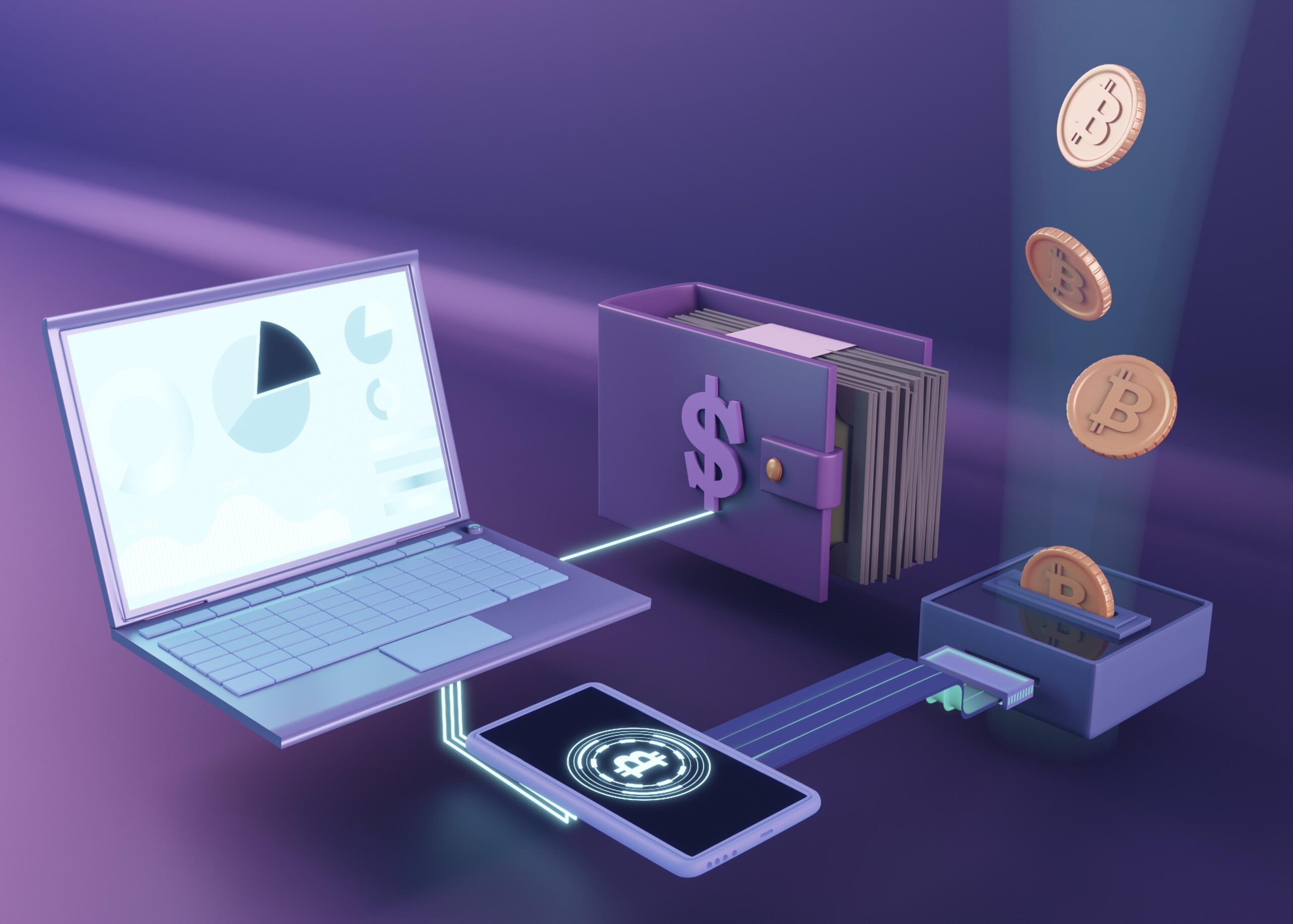Cryptocurrency is revolutionizing the way transactions are made, creating a new era of digital currencies and blockchain technology. As an AMA cryptocurrency educational company, we are dedicated to providing beginner-friendly information to help new users understand this evolving financial landscape. In this comprehensive guide, we will explore how cryptocurrency works and what makes it unique from traditional currencies.
Table of Contents
- What Is Cryptocurrency?
- Cryptocurrency Origins and the Birth of Bitcoin
- Blockchain Technology: The Backbone of Cryptocurrency
- How Does Cryptocurrency Work?
- Mining
- Transactions
- Smart Contracts
- Popular Cryptocurrencies
- Buying and Selling Cryptocurrency
- Storing Cryptocurrency: Wallets
- Using Cryptocurrency for Transactions
- The Challenges and Criticisms of Cryptocurrency
- Final Thoughts and the Future of Cryptocurrency
1. What Is Cryptocurrency?
Cryptocurrency is a digital or virtual form of currency that relies on cryptography to secure transactions and control the creation of new units. Unlike traditional currencies, cryptocurrencies do not have a central issuing or regulating authority. Instead, they use a decentralized system, such as a blockchain, to record transactions and issue new coins. This decentralization offers users increased control, privacy, and security compared to traditional currencies.
2. Cryptocurrency Origins and the Birth of Bitcoin
The concept of digital currency dates back to the 1980s, but it wasn’t until 2009 that the first cryptocurrency, Bitcoin, was created. The anonymous individual or group known as Satoshi Nakamoto released a whitepaper detailing the Bitcoin protocol, which aimed to create a decentralized digital currency that eliminated the need for a central authority, such as banks or governments.
Bitcoin’s creation sparked an explosion in the development of new cryptocurrencies, referred to as “altcoins.” Today, thousands of cryptocurrencies exist, each with its distinct features, use cases, and communities.
3. Blockchain Technology: The Backbone of Cryptocurrency
Blockchain technology is a critical component of how cryptocurrencies work. A blockchain is a distributed public ledger that records all transactions involving a particular cryptocurrency. Each “block” in the chain contains a group of transactions, and once a block is completed, it is added to the chain in chronological order. This process creates a transparent and immutable record of all transactions, making it nearly impossible for malicious actors to alter the transaction history.
Blockchain technology offers several advantages over traditional financial systems, including increased security, transparency, and reduced transaction costs. These benefits have led to the adoption of blockchain technology across various industries, from supply chain management to healthcare.
4. How Does Cryptocurrency Work?
Now that we’ve covered the basics let’s dive into the mechanics of how cryptocurrency works. We’ll explore the process of mining, how transactions are made and verified, and the role of smart contracts in some cryptocurrencies.
4.1 Mining
Mining is the process by which new coins are created and transactions are verified in a cryptocurrency network. Miners use their computer’s processing power to solve complex mathematical problems that validate transactions. Once a miner successfully solves a problem, they can add a new block of transactions to the blockchain, and they earn a reward in the form of newly minted coins and transaction fees.
The mining process serves two main purposes: it secures the network by validating transactions, and it controls the creation of new coins. Over time, the mining process becomes more challenging, and the rewards decrease, ensuring a finite supply of cryptocurrency.
4.2 Transactions
Cryptocurrency transactions occur between users who want to send and receive funds. When initiating a transaction, the sender must provide their digital wallet’s public key (similar to an account number) and the receiver’s public key. They must also sign the transaction with their private key, which serves as a unique digital signature.
Once the transaction is submitted to the network, miners verify its legitimacy by ensuring the sender has the necessary funds and that their private key matches the public key. If the transaction is valid, it is included in a new block and added to the blockchain. This process ensures that transactions are secure, transparent, and irreversible.
4.3 Smart Contracts
Smart contracts are self-executing contracts that run on certain blockchain platforms, such as Ethereum. These contracts contain code that automatically enforces the terms and conditions of an agreement when specific conditions are met. Smart contracts enable users to create decentralized applications (dApps), which can facilitate various activities, from decentralized finance (DeFi) to gaming.
5. Popular Cryptocurrencies
Although Bitcoin is the most well-known cryptocurrency, several other popular cryptocurrencies have emerged, each with its unique features and use cases. Here are a few examples:
- Ethereum (ETH): As mentioned earlier, Ethereum is a blockchain platform that supports smart contracts and dApps. Its native currency, Ether, is used to pay for transaction fees and computational services on the Ethereum network.
- Litecoin (LTC): Often referred to as the “silver to Bitcoin’s gold,” Litecoin is a peer-to-peer cryptocurrency that offers faster transaction times and lower fees than Bitcoin.
- Ripple (XRP): Ripple is both a digital payment protocol and a cryptocurrency (XRP). It aims to provide a fast, low-cost, and scalable solution for cross-border payments, targeting financial institutions and payment providers.
6. Buying and Selling Cryptocurrency
To buy and sell cryptocurrency, users typically rely on one of two platforms: traditional brokers or dedicated cryptocurrency exchanges. Both options have their pros and cons, with traditional brokers often offering lower trading costs but fewer cryptocurrency-specific features, while dedicated exchanges provide a wider selection of cryptocurrencies and wallet storage options.
When choosing a platform, consider factors such as available cryptocurrencies, fees, security, storage and withdrawal options, and educational resources. Once you’ve selected a platform, you can fund your account using your preferred method, such as credit/debit cards, ACH transfers, or wire transfers.
To place an order, simply navigate to your chosen platform’s web or mobile interface, select “buy” or “sell,” choose the order type, enter the amount of cryptocurrency you wish to purchase or sell, and confirm the transaction.
7. Storing Cryptocurrency: Wallets
After purchasing cryptocurrency, it’s crucial to store it securely to protect it from theft or hacks. Cryptocurrencies are typically stored in digital wallets, which can be either physical devices (cold wallets) or online software (hot wallets). Cold wallets offer greater security as they store your private keys offline, while hot wallets provide more convenience for frequent transactions but are more susceptible to cyber threats.
Some exchanges provide wallet services, allowing you to store your cryptocurrency directly on their platform. However, not all exchanges or brokers offer this feature, so it’s essential to research your storage options before investing.
8. Using Cryptocurrency for Transactions
While the primary use case for many cryptocurrencies is as a speculative investment, they can also be used for various transactions. As more businesses begin to accept cryptocurrencies, users can purchase goods and services ranging from everyday items to luxury products. Some examples include:
- Technology and e-commerce: Companies like Microsoft, AT&T, and Overstock accept cryptocurrencies for purchases on their websites.
- Luxury goods: Online retailers like Bitdials offer high-end watches and other luxury items in exchange for Bitcoin.
- Automotive: Some car dealerships accept cryptocurrency as payment for vehicles.
For retailers that do not directly accept cryptocurrency, users can utilize cryptocurrency debit cards, such as BitPay, which convert the cryptocurrency to fiat currency at the point of sale.
9. The Challenges and Criticisms of Cryptocurrency
Despite the many advantages of cryptocurrencies, they also face challenges and criticisms, including:
- Volatility: Cryptocurrency prices can experience extreme fluctuations, which can lead to significant gains or losses for investors.
- Regulatory uncertainty: The legal status of cryptocurrencies varies by country, and some governments have taken steps to ban or restrict their use.
- Security concerns: While blockchain technology provides a high level of security, cryptocurrency exchanges and wallets have been targeted by hackers, resulting in substantial losses.
- Environmental impact: The mining process consumes large amounts of electricity, contributing to environmental concerns and raising questions about the sustainability of certain cryptocurrencies.
10. Final Thoughts and the Future of Cryptocurrency
Cryptocurrency has come a long way since the inception of Bitcoin in 2009. With thousands of cryptocurrencies in existence and blockchain technology being adopted across various industries, it’s clear that this innovative financial landscape is here to stay. However, challenges and criticisms remain, and it’s essential for users to stay informed and make educated decisions when investing in and using cryptocurrencies.
As an AMA cryptocurrency educational company, we are committed to providing accurate and up-to-date information to help users navigate the world of cryptocurrencies. Whether you are a seasoned investor or a newcomer, understanding how cryptocurrency works and what makes it unique is the first step towards a successful experience in this ever-evolving financial landscape.










